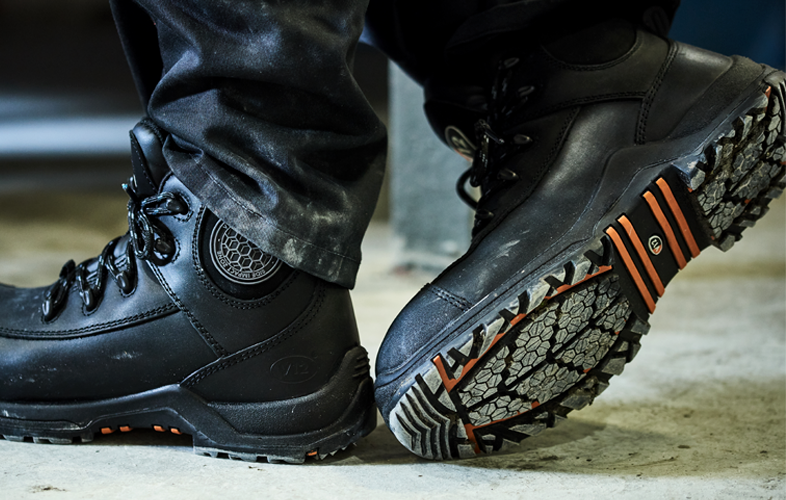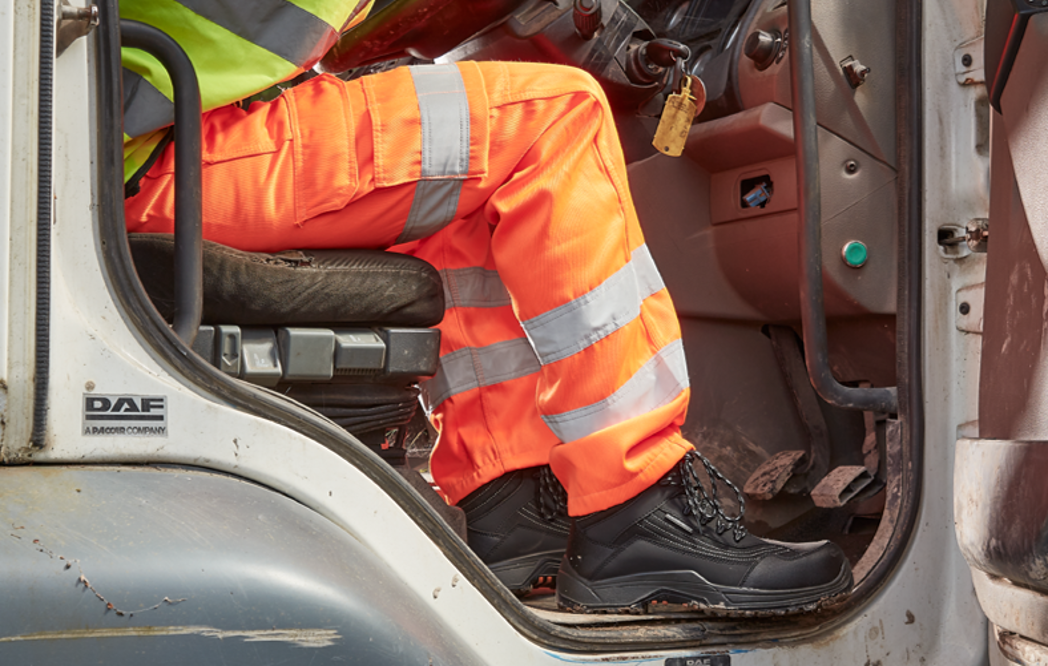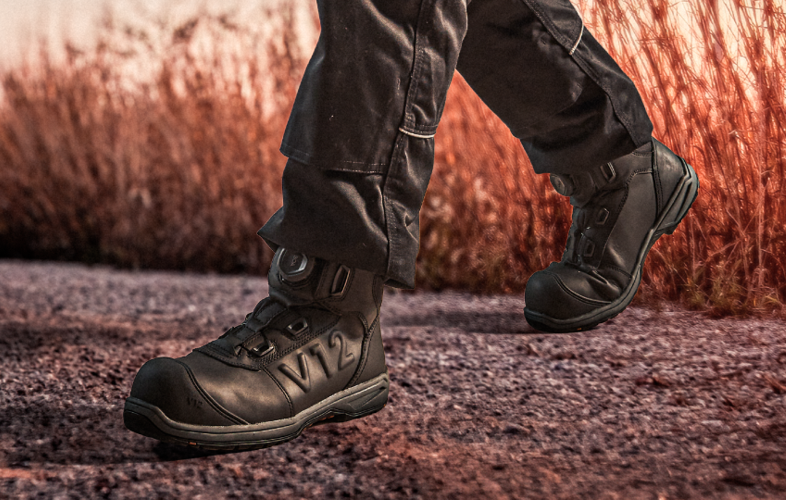We ask a lot of our feet. For a part of the body made up of such small joints, they take a lot of weight and force when we’re standing for long periods of time at work, particularly if there is heavy lifting involved. And when you consider that one quarter of all the bones in the human body are in our feet, it reminds us that while our feet support us, we should do our best to support them too.
That’s why we’ve come up with a guide to ensure if you’re on your feet all day in work boots, you’re doing all the right things to stay comfortable and healthy.
This guide might be particularly useful for those working in:
- Warehousing
- Food and beverage
- Construction
- Automotive/Aerospace manufacturing
- Mechanics
- Or if you're standing or walking at work for 4 hours+ per day
1. Anti-fatigue insoleS
Pain from foot fatigue can range from irritating to debilitating. So, when standing for large portions of the day, giving your feet support with a dynamic insole can reduce aches and pains such as Plantar Fasciitis, but can also help maintain proper joint alignment.
👣Comfort tip – a good insole should support the arch, provide shock-absorbance and ease pressure, but should not have too much cushioning. Find out why here.
2. Anti-fatigue mattinG
Research has shown that anti-fatigue mats can reduce foot fatigue by easing the pressure on feet and promoting the small leg movements which allow improved circulation.
Note: an anti-fatigue mat shouldn't be seen as a primary comfort solution. Firstly, if workers have the right anti-fatigue footwear, these mats won't be necessary, so employers can avoid this additional expense. But most importantly, mats are a trip hazard as they change the level - however minimally - of the user's surface. And where there's a change of surface, there's a tripping hazard.
3. Get the right size
Hang on - you know your own size and have done since you were young right? Well...
❓Did you know?
- Some people’s feet don’t stop growing until their early or mid-twenties. So, if they get their feet measured in their late teens, this might not reflect their true size just a few years later.
- The foot arch can drop as you get older, and this flattening can make it longer, so a bigger boot can sometimes be necessary.
- Pregnant women often experience this same flattening due to the loosening of ligaments and gained weight caused by pregnancy. Post-birth, some women remain in this larger size permanently.
So, when you’re standing in the same pair of boots for hours at a time, you’d better be certain they’re the right size. Find out more guidance on how to get the perfect fitting safety boot here.
But it’s not always a case of needing bigger footwear. As you’ll see below, for some it’s about sizing down rather than up.
4. Get the right fit
Sounds simple enough - but you’d be surprised by how many people spend all day in boots that don’t reflect their foot shape. Why?
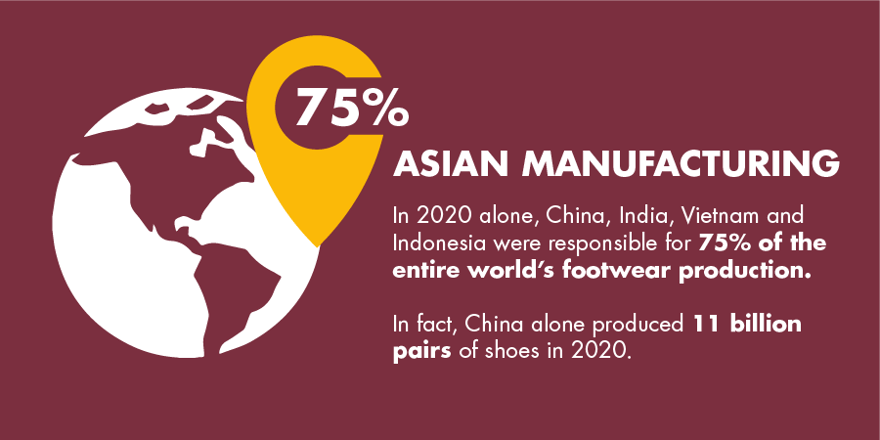
When footwear is made by these Asian nations, it’s often smaller because the population in these Eastern regions tend to have narrower feet. As a result, the lasts used to shape these boots and shoes which so many of us wear daily reflect this.
So, when this footwear arrives on Western markets, wider-footed wearers from Europe can end up in footwear that is too small, even if they are labelled as their apparent size. This means you’ve probably started sizing up for comfort without even realising...
👣Comfort tip - when you invest in a pair of safety boots, makes sure they are built – like V12’s are – on a last that reflects more of the world's foot shapes. We designed our last so it accommodates both European and Asian foot shapes, so wearers get a more universally comfortable and supportive fit.
A note on boot construction...
Getting the right boot also means getting one with the right construction. If you work in a safety-critical environment and are standing up for hours at a time, rather than wearing a boot which has been made with just the essential features, you need a boot that’s been designed and manufactured with comfort as well as safety in mind. These features might include:
- A cushioned mid-layer
- A flexible, lightweight midsole
- A shank to aid support
Find out more about these comfort solutions here.
5. Compression socks
In simple terms, walking has a sort of ‘pumping’ effect on the muscles which sends blood back up to the body, but this does not occur when standing. Therefore, standing for long periods of time can cause increased blood pressure in the feet, as more blood settles or ‘pools’ in the foot.
Not only can this cause pain and fatigue, blood pooling increases pressure in the leg veins which can cause ulcers, swelling and varicose veins. A good compression sock will gently push the blood back up toward the heart, restoring proper circulation.
6. Moisture-wicking lining
When trying to achieve the best levels of comfort for your feet, it’s critical to keep moisture out. If working outdoors, this means a waterproof work boot is a must, but working indoors or in hot environments, it’s sweat that is the real enemy - especially if you’re in your boots for a long time. And when we say a long time, we mean it. In a survey from the University of Bath of over 500 safety boot wearers, when asked how long they wore their safety boots for in one go, the feedback was pretty clear.
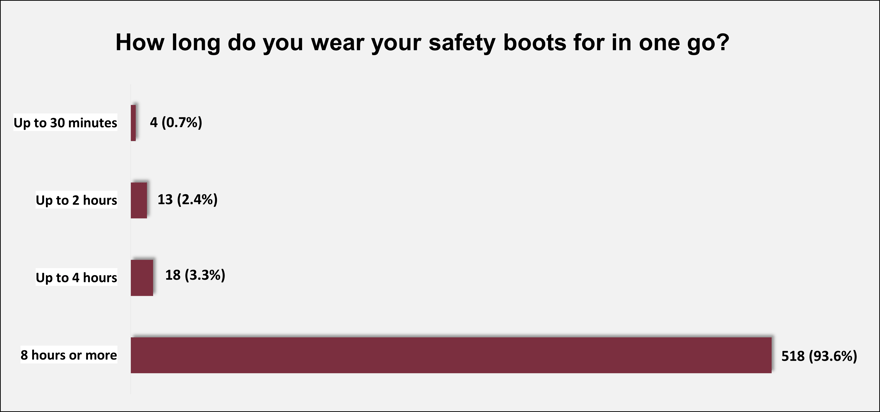
Nearly 94% of respondents said they wore their boots for 8 hours+ per day. When a wearer spends this much time in boots, sweaty feet won’t only be uncomfortable - as perspiration softens the skin, their feet will be more vulnerable to blistering due to rubbing.
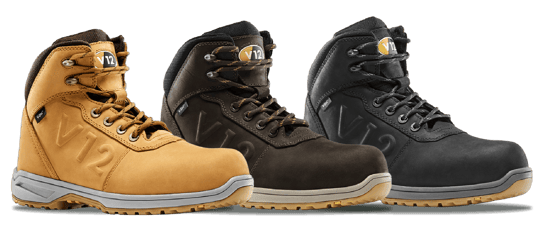 ❓Did you know - feet have 250,000 sweat glands? When active, feet can produce up to six ounces of perspiration a day. That's ¾ of a cup.
❓Did you know - feet have 250,000 sweat glands? When active, feet can produce up to six ounces of perspiration a day. That's ¾ of a cup.
Given this (slightly gross) fact, having a work boot made with moisture-wicking lining which draws this unwanted moisture away from the foot will be a sure-fire way to increase comfort. And if this boot is paired with an insole with similar moisture-wicking properties, you’re on to a winner.
The Lynx range (pictured) from V12 is a great example of this – its V-DriTM membrane keeps water out but lets the foot breathe, while its moisture-wicking lining gives double assurance that any sweat from the foot is carried away and out of the boot.
7. Workstation design
A very important question to ask yourself or your employer if you’re standing on your feet all day, is simply WHY? Why am I standing all day, and is there a refinement in my workstation set-up or any adjustments that can be made so this isn’t the case?
Exploring these questions could well give you greater comfort and reduce potential health issues, as well as upping productivity and morale. Many in our line of work say that PPE is the last line of defence, but often it isn’t needed if the lines before it are considered.
8. Exercises if you’re standing all day
The right footwear and foot health accessories are important, but you can make a big positive impact by repeating some simple daily exercises. You can find them all here.
LEARN MORE
If you'd like to learn more about V12's comfort and foot health solutions, we've written a clear and easy to use whitepaper. Click below and get all the info you and your feet need.

